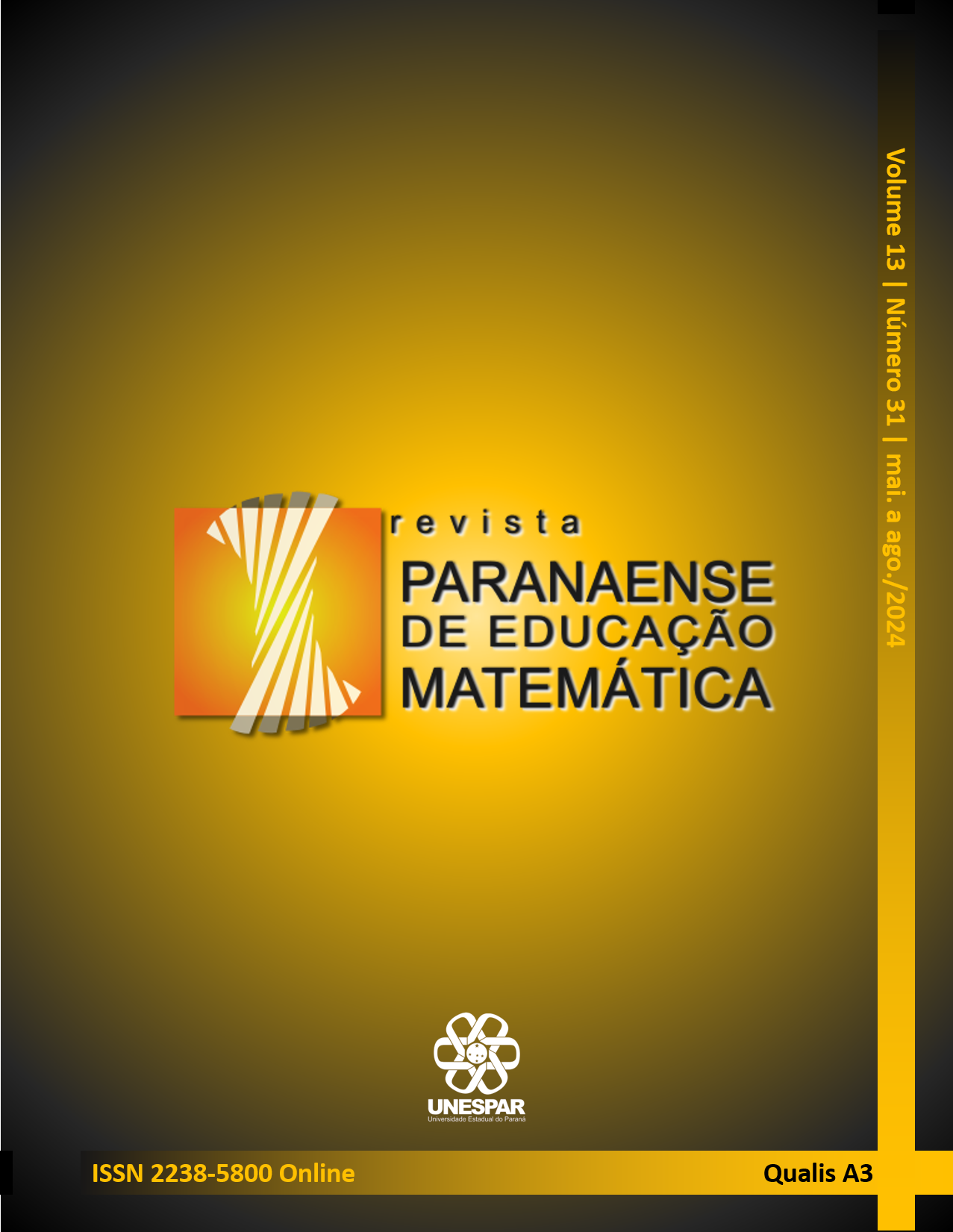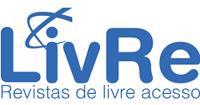LEARNING STYLES AND THE CLUSTERING PROCESS: WHAT THEY TELL US TO FORM COOPERATIVE GROUPS IN MATHEMATICS AT EJA-EPT
o que eles nos dizem para a formação de grupos cooperativos em matemática na EJA-EPT
DOI:
https://doi.org/10.33871/rpem.2024.13.31.8501Abstract
This article aims to reflect on the data mining process for the composition of groups of students of Youth and Adult Education, governed by their learning styles. At that time, 25 students were submitted to an Index of Learning Styles (ILS) questionnaire that guided the possibility of groupings for future cooperative work in mathematics classes. From the collection of the style profiles of each student, the clustering algorithm k-means was used as a suggestion for the formation of groups. At the end of the work, specificities were observed in the clusters formed and in the groups of clusters. Thus, we believe that the data mining technique will be useful to the process of forming groups based on learning styles, if there is, on the part of the teacher, the necessary analysis that identifies the homogeneity of each group and the heterogeneity between the groups. groups. Based on these specificities, the teacher will have more elements to direct the pedagogical being.
Downloads
References
ARAÚJO, R. A. G. S. et al. Estilos de Aprendizagem e características dos estudantes de Ciências contábeis a partir do modelo de Felder & Silverman (1988). In: USP INTERNATIONAL CONFERENCE IN ACCOUNTING. 2018.
AVELAR, C. F. P. Mineração de dados. Revista Vianna Sapiens. Juiz de Fora, v. 8, n. 2, p. 30-54, 2017.
ÁVILA, P. Aprendizagem e educação de adultos em Portugal e na EU: relevância sociológica, desafios conceptuais e resultados de investigação. Sociologia, Problemas e Práticas, n. 102, p. 9-39, 2023.
BAIR, J. H. Supporting cooperative work with computers: Addressing meeting mania. In: Digest of Papers. COMPCON Spring 89. Thirty-Fourth IEEE Computer Society International Conference: Intellectual Leverage. IEEE, 1989. p. 208-217.
BARKLEY, E. F.; MAJOR, C. H.; CROSS, K. P. Collaborative learning techniques: A handbook for college faculty. John Wiley & Sons, 2014.
BARROS, R. Revisitando Knowles e Freire: Andragogia versus pedagogia, ou o dialógico como essência da mediação sociopedagógica. Educação e Pesquisa, São Paulo, v. 44, p. e173244, 2018. Disponível em: <http://www.scielo.br/scielo.php?script=sci_arttext&pid=S1517-97022018000100465&lng=pt&nrm=iso>. Acesso em: 02 jan. 2023.
BERMEJO DÍAZ, J. M. et al. Educación física y universidad: Evaluación de una experiencia docente a través del aprendizaje cooperativo. Retos. Nuevas tendencias en Educación Física, Deporte y Recreación, vol. 39, p. 90-97, 2021.
BONA, A. S. D.; SCHÄFER, P. B.; FAGUNDES, L. C.; BASSO, M. V. de A. Cooperação na Complexidade: Possibilidades de Aprendizagem Matemática suportadas por Tecnologias Digitais. Revista Novas Tecnologias na Educação, Porto Alegre, v. 9, n. 2, 2011. DOI: 10.22456/1679-1916.25168. Disponível em: <https://seer.ufrgs.br/index.php/renote/article/view/25168>. Acesso em: 02 jan. 2023.
BRASIL. Conselho Nacional de Educação. Câmara de Educação Básica. Resolução Nº. 11/2000 de 3 de julho de 2000. Dispõe sobre as Diretrizes Curriculares Nacionais para Educação de Jovens e Adultos. Brasília: MEC, 2000.
CAMILO, C. A.; SILVA, J. C. Mineração de Dados: Conceitos, Tarefas, Métodos e Ferramentas. Instituto de Informática Universidade Federal de Goiás, v. 1, n. 1, p. 1-29, 2009
COHEN, E. G.; LOTAN, R. A. Planejando o trabalho em grupo: estratégias para salas de aula heterogêneas. Porto Alegre: Penso Editora, 2017.
COSSEY, R. Mathematical communication: issues of access and equity. Stanford University, 1997.
DINIZ, C. A. R.; NETO, F. L. Data Mining: uma Introdução. São Paulo: XIV Simpósio Nacional de Probabilidade e Estatística. IME-USP, 2000.
ESTEVES, D. C. F. O impacto das aulas de instrumento em grupos cooperativos no desenvolvimento do pensamento crítico. 2022. 115f. Dissertação (Mestrado em Ensino de Música) – Universidade Católica do Porto, Porto, 2022.
FELDER, R. M.; SILVERMAN, L. K. Learning and Teaching styles in engineering education. Engineering education, v. 78, n. 7, p. 674-681, 1988. Disponível em: <https://www.researchgate.net/publication/257431200_Learning_and_Teaching_Styles_in_Engineering_Education>. Acesso em: 18 fev. 2021.
FELDER, R. M.; SOLOMAN, B. A. Index of Learning Style, 1991. Disponível em: <https://www.webtools.ncsu.edu/learningstyles/>. Acesso em: 18 fev. 2021.
FILATRO, A. Estilos de aprendizagem. ENAP – Fundação Escola Nacional de Administração Pública. Brasília, DF, 2015. Disponível em: <http://repositorio.enap.gov.br/handle/1/2363>. Acesso em: 10 jun. 2023.
FONSECA, M. C. F. R. Educação Matemática de Jovens e Adultos: Especificidades, desafios e contribuições. Belo Horizonte: Autêntica, 2016.
FREITAS, M. A. O.; CUNHA, I. C. K.; BATISTA, H. S. S. Aprendizagem significativa e andragogia na formação continuada de profissionais de saúde. Aprendizagem Significativa em Revista (Meaningful Learning Review), v. 6, n. 2, p. 01-20, 2016.
GIL, A. C. Como elaborar projetos de pesquisa. 7. ed. São Paulo: Atlas, 2022.
HAMADA, A. K.; RASHAD, M. Z.; DARWESH, M. G. Behavior analysis in a learning environment to identify the suitable learning style. International Journal of Computer Science & Information Technology, v. 3, n. 2, p. 48-59, 2011. Disponível em: <https://www.researchgate.net/publication/265916274_Behavior_Analysis_in_a_learning_Environment_to_Identify_the_Suitable_Learning_Style/citations>. Acesso em: 02 jan. 2023.
JAIN, A. K. Data clustering: 50 years beyond k-means. Pattern recognition letters, v. 31, n. 8, p. 651-666, 2010.
KOLB, D. A. Experiential learning: experience as the source of learning and development. Englewood Cliffs, New Jersey: Prentice – Hall, 1984.
NIETTO, P. R. Algoritmos de agrupamento divisivos com predeterminação Automática do Número de Grupos, 2016, 155 f. Dissertação (Mestrado em Ciência da Computação) – Faculdade Campo Limpo Paulista, São Paulo, 2016.
PEREIRA, E. J.; JUNIOR, N. V. Os Estilos de Aprendizagem no Ensino Médio a partir do Novo ILS e a Sua Influência na Disciplina de Matemática. ALEXANDRIA Revista de Educação em Ciência e Tecnologia, v. 6, n. 3, p. 173-190, 2013.
RAMOS, I. M. M. Recomendação para formação de grupos para atividades colaborativas utilizando a caracterização dos aprendizes baseada em trilhas de aprendizagem, 2017. 113f. Dissertação (Mestrado em Informática) – Universidade Federal do Amazonas, Manaus, 2017.
RIOS, F. S. et al. APRENDIZAGEM AUTODIRIGIDA E DESIGN INSTRUCIONAL: CAMINHOS PARA A APRENDIZAGEM. Revista Amor Mundi, v. 4, n. 5, p. 3-8, 2023.
SCHMIDT, C. S.; DOMINGUES, M. J. S. Estilos de aprendizagem: um estudo comparativo. Revista da Avaliação da Educação Superior, Campinas: v. 21, n. 2, p. 361-385, 2016.
SLAVIN, R. E. Ability grouping and student achievement in elementary schools: a best-evidence synthesis. Review of Educational Research, v. 57, n. 3, p. 293-336, 1978.
SOUZA, J. F.; JUNGER, A. P.; SOUZA, J. F. F.; AMARAL, L. H. Ensino de cursos tecnológicos por meio de estilos de aprendizagem aplicados à estatística. Research, Society and Development, Itajubá, v. 7, n. 3, 2018.
TREISMAN, U. Studying Students Studying Calculus: A Look at the Lives of Minority Mathematics Students in College, The College Mathematics Journal, v. 23, n. 5, p. 362-372, 1992.
VARGAS, P. G.; GOMES, M. F. C. Aprendizagem e desenvolvimento de jovens e adultos: novas práticas sociais, novos sentidos. Educação e Pesquisa, v. 39, n. 02, p. 449-463, 2013.
VIANA, H. B.; MARIO, A. J. O. Estilos de aprendizagem e uso de tecnologia na educação a distância. Internet Latent Corpus Journal, v. 9, n. 1, p. 69-79, 2019.
WEBB, N. Predicting learning from student interaction: defining the interaction variable. Educational Psychologist, v. 18, n. 1, p. 33-41, 1983.
ZAINA, L. A. M.; BRESSAN, G.; CARDIERI, M. A. A. C.; RODRIGUES JUNIOR, J. F. e-LORS: Uma Abordagem para Recomendação de Objetos de Aprendizagem. Revista Brasileira de Informática na Educação, v. 20, n. 1, p. 4-16, 2012.
Downloads
Published
How to Cite
Issue
Section
License
Copyright (c) 2024 Revista Paranaense de Educação Matemática

This work is licensed under a Creative Commons Attribution-NonCommercial-NoDerivatives 4.0 International License.










